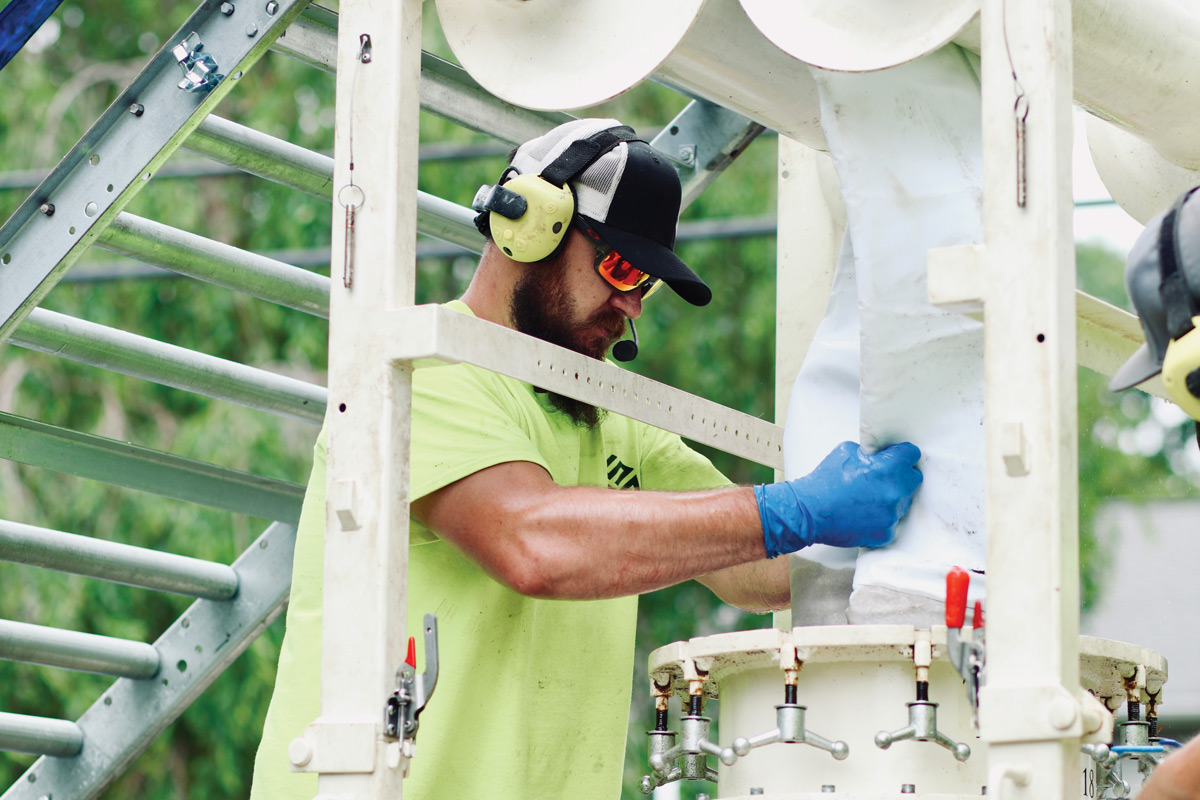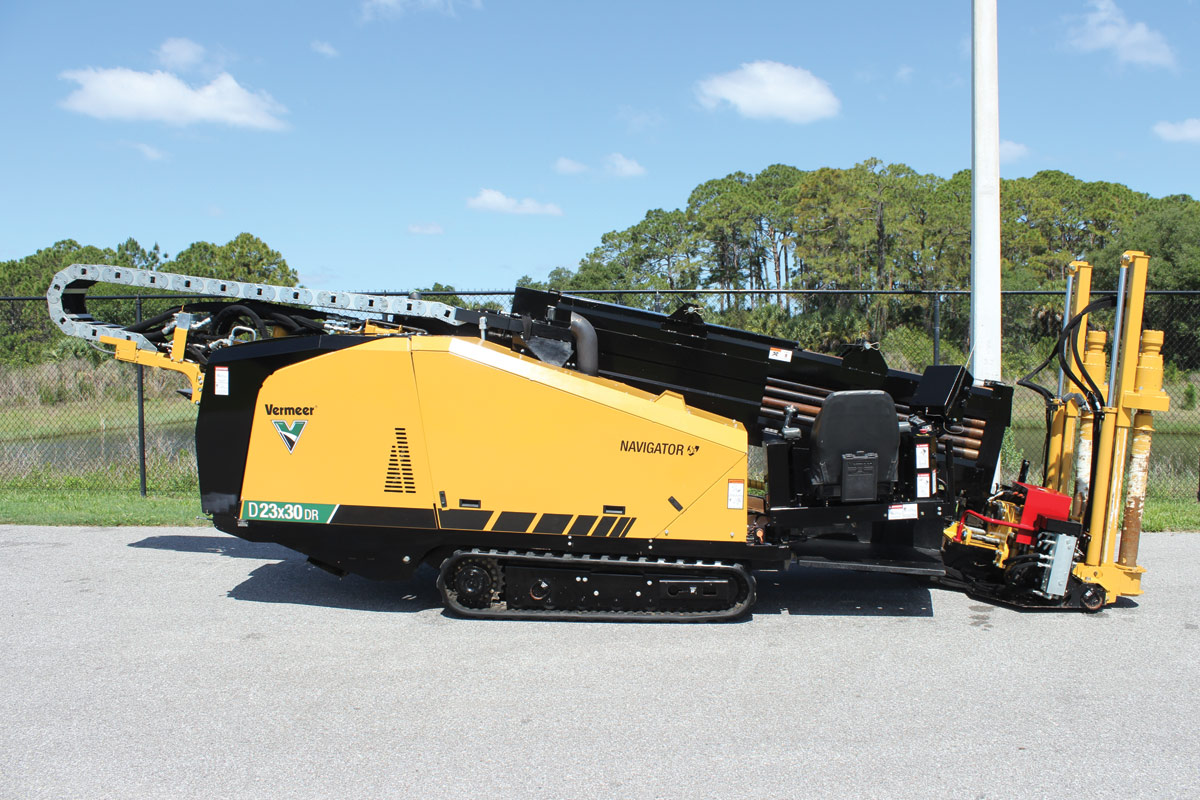
Women in Engineering – Jennifer Glynn, P.E.
Historically a male-dominated profession, women continue to make inroads, especially in the trenchless industry.
Glass ceilings are being broken all over the place these days, whether at one of the highest offices in world, such Vice President of United States, or just in everyday life.
Our corner of the world involves engineering and construction. Both industries have historically been dominated and led by men. According to the Society of Women’s Engineer’s website, 13 percent of engineers are women. The times in these industries are changing as more and more women choose to pursue engineering careers, seeking their professional fortunes; many of these career paths are being forged and established in the trenchless industry with increased numbers ascending to key leadership roles.
Seeing women donning hard hats and on the jobsite is not such an unusual sight in 2021. That wasn’t always the case. We’ve all heard stories of “mansplaining” and stereotyped attitudes toward women in the construction world.
Thankfully, those attitudes have evolved and the professionalism of accepting women in roles historically filled by males continues evolve and grow.
June 23 marks International Women in Engineering Day. The day was created in 2017 by the Women’s Engineering Society in the United Kingdom after the launch of a national U.K. women in engineering day three years earlier drew enormous interest and celebration. International Women in Engineering Day (INWED) was born to enable the celebration of women in engineering to become global.
We spoke to five female engineers in the trenchless industry, learning how they came to call engineering home and gaining perspective on the attitudes noted above. They are not new to engineering, with their careers firmly established. They also spoke of the need for more female mentors in the engineering field, to inspire, push and encourage more females to pursue engineering as a career. They are all proud to assist and mentor the next generation of female engineers.
RELATED: Women in Engineering – Kim Paggioli, P.E.
RELATED: Women in Engineering – Denise McClanahan, P.E.
RELATED: Women in Engineering – Maureen Carlin, P.E., Ph.D.
Here is one of their stories.
For Jennifer Glynn, P.E., her entire 25-year career has focused on designing pipelines using trenchless technology. Her expertise is in large diameter condition assessment and rehabilitation design.
She says there’s no interesting or exciting backstory to how she reached this level of expertise in engineering. It came down excelling at math and science in school. Career-wise, engineering was where those skills pointed her. Today, Glynn is a senior technical practice lead for Woodard & Curran, based out of its Sacramento, California office.

“I wish I had a more glamorous answer. But the truth is that I excelled in math and science in high school and everyone told me I should be an engineer,” Glynn explains. “I looked up descriptions of the different types of engineers and chose civil engineering as my major because it seemed the most interesting. To be honest, I didn’t know anything about pipeline design or trenchless technology until after I was hired for my first job after I graduated college.”
Glynn earned her bachelor of science of civil engineering from the University of New Hampshire, and then headed to California and a job market in a full swing recession. Her first job led Glynn to working on a large force main project that included installation of a pipe using trenchless technology. “I was fascinated from the start and started to seek out more pipeline work using different trenchless new installation and rehabilitation technologies.”
While the work was challenging and exciting, what she noticed early on was a lack of female colleagues in the engineering and construction fields, especially in leadership positions and skeptical eyes by male counterparts. Both those areas have changed over the course of her career.
“I can say that the industry has made leaps and bounds from when I first started in the profession. The stories I can tell!” says Glynn. “I am always so excited when I see young women at the annual [NASTT] No-Dig Conference and out and about in the marketplace. What used to be an anomaly is becoming the norm. However, I’d also say that the pipeline industry (including trenchless technology) is still a male dominated business sector within civil engineering. But there is definitely movement in the right direction.
“When I first started my career, I had to fight hard for a seat at the table. This was especially true for construction projects where I was more likely to get cat calls than contract compliance,” Glynn relates, noting she can remember being the lone female on a tradeshow floor and seeing magazine advertisements with pin-up girls alongside pieces of trenchless equipment. “Today, attitudes have definitely changed. There are more women in the field and they are well respected because they are excellent at what they do, not because of or in spite of the fact that they are a woman.”
With the increase in the number women in engineering also brings an increase in role models available to encourage the next generation of young women looking at engineering, particularly in the trenchless industry. “When I first started out, there were really no women role models in the [trenchless] industry,” Glynn says. “Today, there are quite a few women leaders in prominent roles who I can point to and be proud of.”
Glynn embraces being one of those role models and encourages other women in similar trenchless positions to do the same for the next generation — she urges women already in trenchless careers to get out into the marketplace and present papers, teach and volunteer for committees. It makes a difference, she says.
Advice for young women just starting out in engineering, Glynn says this: Embrace and celebrate the fact that you are a woman. “When I started out, I would try to dress and act more like a man in order to try and be taken more seriously,” she says. “I was hiding a part of who I was in order to fit in. You don’t need to do that. There are skills and qualities that you bring to the table as a woman that make you unique and valuable.”
Sharon M. Bueno is managing editor of Trenchless Technology.




